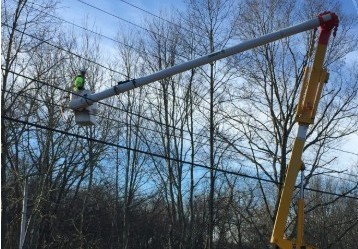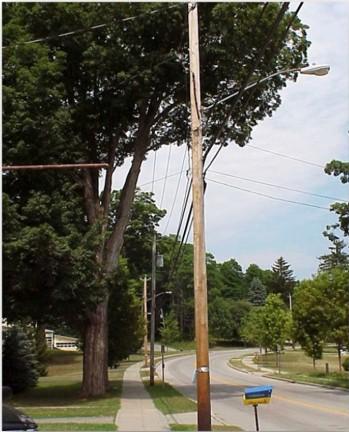
Assessing Forest Condition To Limit Vegetation Removal Near Our Assets
There are millions of trees adjacent to National Grid's electric assets. We invest hundreds of millions of dollars in maintaining and mitigating vegetation risks to our infrastructure and meeting our customers’ expectations of safe and reliable service. Climate change is also having an impact on our utility forest – we’re seeing longer growing seasons, increased frequency and intensity of storms that damage trees, and introduction of non-native species that can thrive in the changing environment.
In response, we’ve conducted a Forest Condition Assessment to better characterize the risks that trees pose to electric service reliability. We specifically looked at systemic risks related to species diversity and if the aging forest is increasingly contributing to damage to our distribution system.

By better understanding tree composition, how it’s changing, and the density and health of our utility forests, we can address risks in a targeted manner. This allows us to make changes to our pruning and hazard tree removals and the frequency of vegetation management work.
Through these adjustments to our vegetation management strategy, we’re better able to target where pruning and removal is needed. This technique allows us to reduce vegetation management costs and maintain as many trees as possible. We also focus our vegetation management efforts on creating pollinator habitat, utilising land stewardship practices that protect pollinators and planting nectar species and milkweed on our rights of ways.
We conducted utility Forest Condition Assessments in 2012, 2015, and 2023 and have seen positive results in the 2023 survey compared to earlier assessments due to improved vegetation management efforts. Trees rated as poor or worst condition are declining in numbers due to proactive risk reduction. We’ve also seen an increase in the overall number of trees within the utility forest adjacent to our distribution system as well as an increase in the number of different species. Finally, our year over year surveys show that our rights of ways support pollinator friendly vegetation in sufficient amounts to be considered valuable habitat for monarchs.